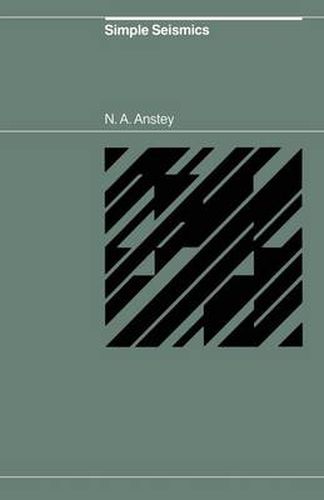Readings Newsletter
Become a Readings Member to make your shopping experience even easier.
Sign in or sign up for free!
You’re not far away from qualifying for FREE standard shipping within Australia
You’ve qualified for FREE standard shipping within Australia
The cart is loading…






This title is printed to order. This book may have been self-published. If so, we cannot guarantee the quality of the content. In the main most books will have gone through the editing process however some may not. We therefore suggest that you be aware of this before ordering this book. If in doubt check either the author or publisher’s details as we are unable to accept any returns unless they are faulty. Please contact us if you have any questions.
This little book is different. It is written, primarily, for geologists, reservoir engineers, and log analysts. Why? Because today’s seismic method is more than a tool for reconnaissance exploration, for finding structures; it has become a tool for studying the discovered reservoir-its extent, its barriers, its variations of thickness, and its trends of porosity. Today, the geophysicist, the geolog ist, the engineer, and the log analyst can do great things together. Because the book is not written primarily for geophysi cists, it can skip much of the mechanics of the seismic method. The reader who reaches the last page (bless him!) will not be able to practise the seismic method, but he will understand how the seismic method can help to solve his problems. It may also be of value to those practitioners of the seismic method-in the field or in the processing centre-who already know the mechanics of the method, but would like to take a broader view. 1 1 Seismics and Structure Of all the geophysical methods working from the surface, there is only one which is widely accepted for studies of individual petroleum reservoirs-the seismic reflection method. We would dearly love to have something better, but alas … Reduced to its essentials, the method is this: we make a bang, and we listen for echoes.
$9.00 standard shipping within Australia
FREE standard shipping within Australia for orders over $100.00
Express & International shipping calculated at checkout
This title is printed to order. This book may have been self-published. If so, we cannot guarantee the quality of the content. In the main most books will have gone through the editing process however some may not. We therefore suggest that you be aware of this before ordering this book. If in doubt check either the author or publisher’s details as we are unable to accept any returns unless they are faulty. Please contact us if you have any questions.
This little book is different. It is written, primarily, for geologists, reservoir engineers, and log analysts. Why? Because today’s seismic method is more than a tool for reconnaissance exploration, for finding structures; it has become a tool for studying the discovered reservoir-its extent, its barriers, its variations of thickness, and its trends of porosity. Today, the geophysicist, the geolog ist, the engineer, and the log analyst can do great things together. Because the book is not written primarily for geophysi cists, it can skip much of the mechanics of the seismic method. The reader who reaches the last page (bless him!) will not be able to practise the seismic method, but he will understand how the seismic method can help to solve his problems. It may also be of value to those practitioners of the seismic method-in the field or in the processing centre-who already know the mechanics of the method, but would like to take a broader view. 1 1 Seismics and Structure Of all the geophysical methods working from the surface, there is only one which is widely accepted for studies of individual petroleum reservoirs-the seismic reflection method. We would dearly love to have something better, but alas … Reduced to its essentials, the method is this: we make a bang, and we listen for echoes.